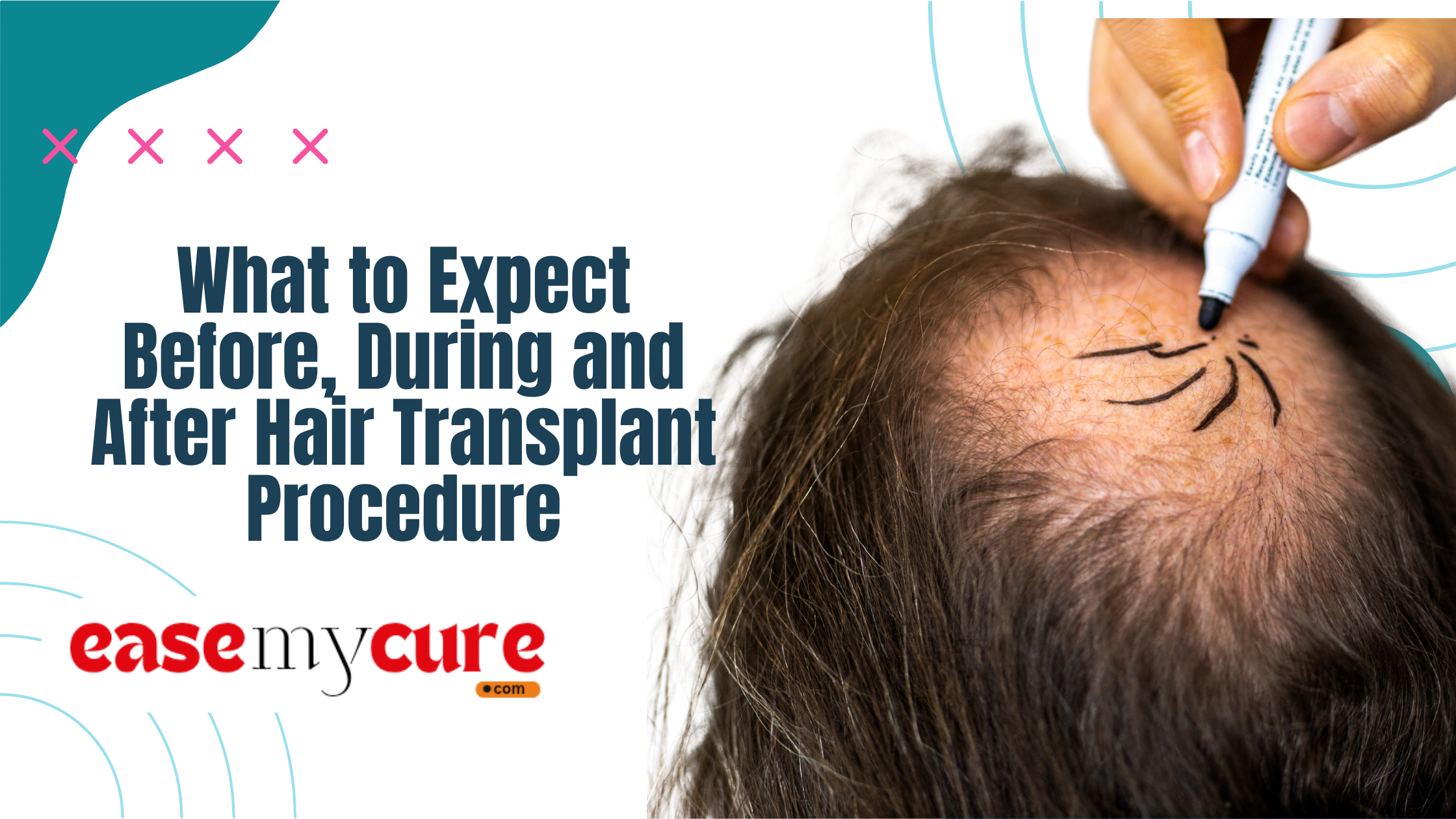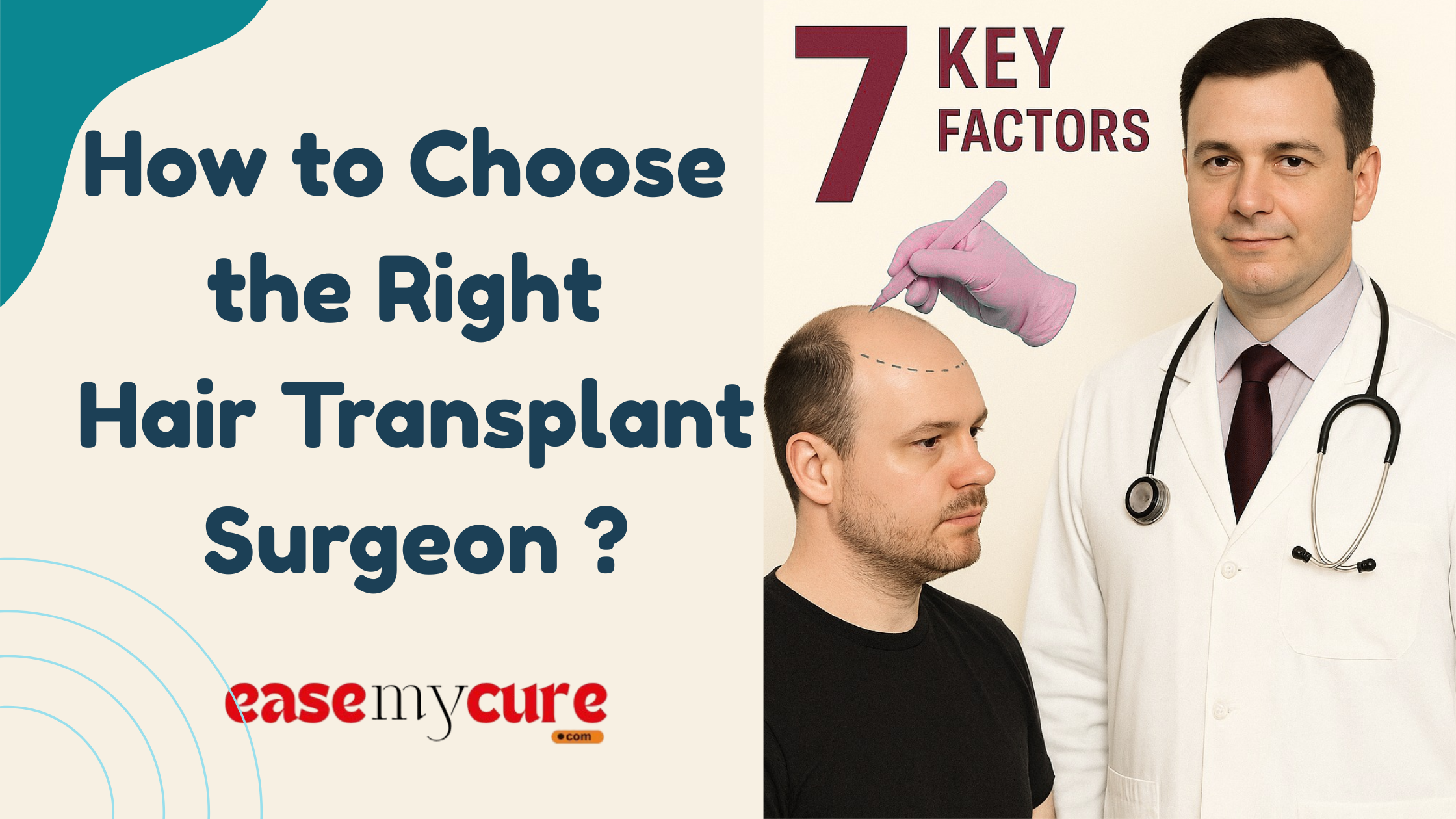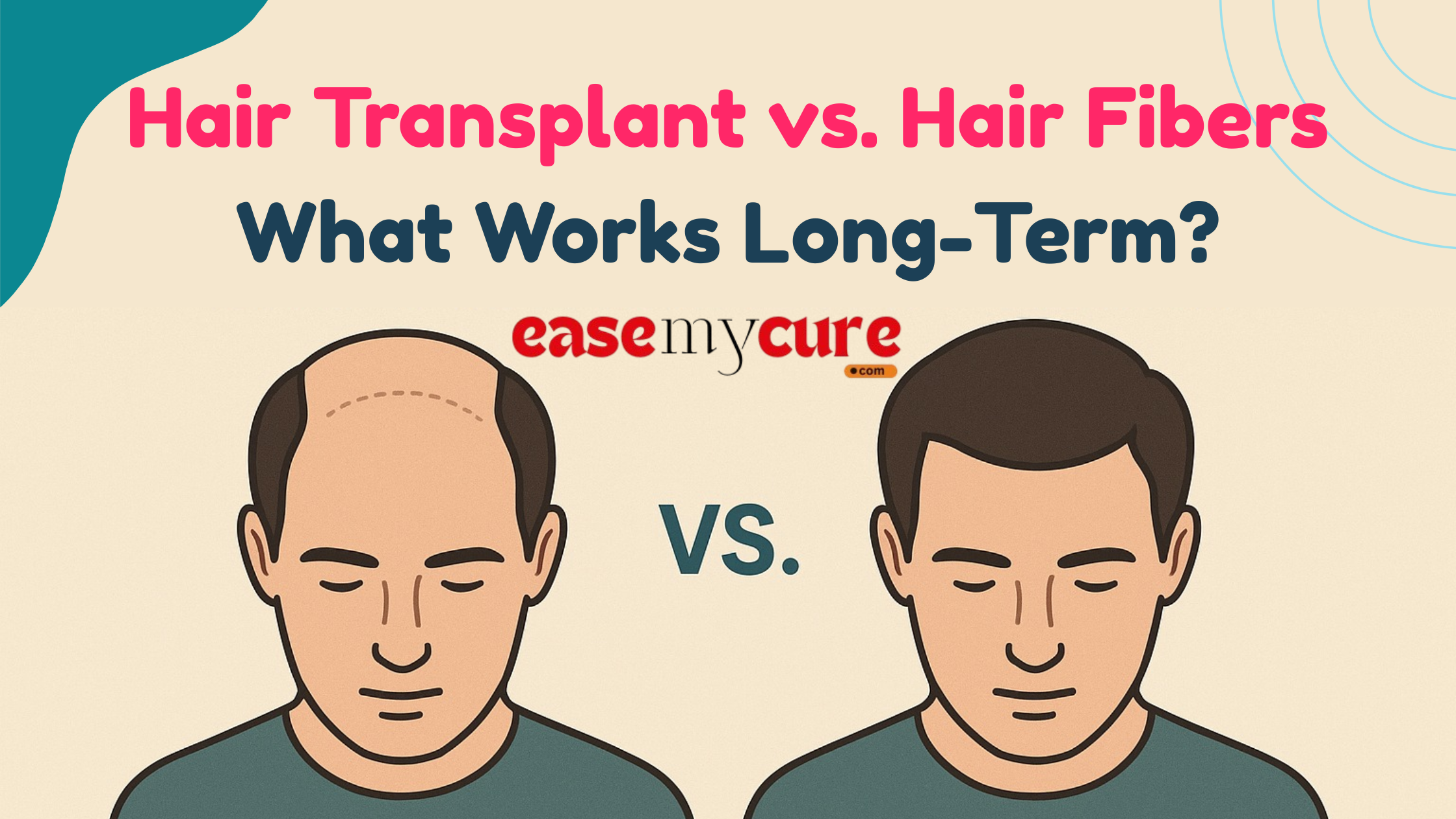What to Expect Before, During and After Hair Transplant Procedure


What to Expect Before, During and After Hair Transplant Procedure
A hair transplant journey generally involves several stages, right from initial consultation to final results. The process involves preparation, surgical procedure, and a recovery phase where the transplanted hair grows. Understanding the timeline properly and managing expectations are very important to have a positive experience.
Consult Your Doctor
You need to go for a pre-consultation with an experienced and qualified hair transplant surgeon. During the consultation, the doctor will:
- Evaluate your specific hair loss patterns as well as hair density.
- Discuss your complete medical history and all underlying conditions.
- Explain the complete hair transplant procedure and differences between FUT and FUE.
- Develop an effective personalized treatment plan based on the patient's specific needs and goals.
Which Tests Are Done Before Hair Transplantation?
Different tests are done to assess the candidate's overall health before going for a hair transplant procedure. These tests are crucial to determine whether the individual is suitable for the procedure. The tests that should be done before hair transplantation are:
Blood tests: The doctor will recommend certain blood tests before hair transplantation. These tests will provide information about the candidate's blood sugar levels, infections, blood pressure, or other health problems. This test is done to evaluate the person’s overall health.
Dermatological tests: Dermatological tests are often performed before hair transplantation. It is done to collect all information about any infections, lesions, or other health issues in the hair-bearing area of the skin by photographing the area, studying the hair strands, and doing a dermoscopic evaluation.
Hormone tests: These tests are usually recommended before hair transplant procedure as several hormonal factors can cause hair loss. These tests are performed to find out the cause of hair loss.
The tests are performed to evaluate the person’s overall health, check whether the person is suitable for the procedure, and reduce the possible complications which might arise after the procedure. Hair transplant plans are designed and preparation is done for the surgery depending on all the above test results.
Pre-Transplantation Photography
Pre-transplantation photography is vital to know the extent of hair loss and study the post-surgery results. Pre-transplantation photography involves the below steps:
Taking photographs of face, head, and hair: Photographs of the hair, head and face are taken. These photographs are used to compare the extent of hair loss before and after the procedure.
Finding the extent of hair loss: All the photographs are evaluated by your health professional to find the degree of hair loss. This will help determine the techniques to be used during the procedure.
How to prepare for Hair Transplant?
There are various things you need to do before you undergo hair transplant. Inform your doctor regarding all medicines that you are currently having, including over-the-counter medications and all supplements. Certain medications might need to be discontinued or adjusted before the procedure to reduce bleeding risks or interfere with healing. Excessive alcohol consumption and smoking can negatively affect healing. Follow all dietary recommendations from the surgeon, which might include avoiding some foods that may thin blood or increase bleeding risks. Clean your scalp before the procedure, as directed by the surgeon, and avoid using any hair products that may irritate the scalp. Focus on relaxation and getting adequate sleep before the procedure to reduce stress. Wear comfortable clothing that doesn't need to be pulled over the head. Make all necessary arrangements to ensure smooth transportation to and from the clinic.
What Happens on the Day of Hair Transplant Surgery?
On the day of hair transplant surgery, an individual can expect an organized and structured process which is designed to ensure their comfort and safety during the procedure.
Arrival at the Clinic
Check-in: After arriving at the surgical facility, you need to check in at reception desk and then complete all necessary paperwork and documentation.
Preparation: You will be asked to go to a pre-operative area to change you into surgical outfit, such as surgical gown. A surgical assistant or nurse will review your complete medical history, explain the details of the procedure, and answer all questions you may have.
Pre-Operative Preparation
Anesthesia: Based on the type of hair transplant procedure and the surgeon’s preferences, you might be given local anesthesia with general anesthesia or sedation. The anesthesia provider explains the type of anesthesia you will be administered and would address your concerns.
Positioning: You will be placed comfortably on a surgical table or chair in a reclined position to let the surgeon access the donor and recipient areas of the scalp.
How Hair Transplant Surgery is Performed?
Surgical Procedure
Harvesting of Donor Area: For follicular unit transplantation (FUT), the surgeon will harvest a small patch of hair-bearing scalp tissues from a donor area. If case of a follicular unit extraction or FUE, individual hair follicles are first harvested from the donor area with the help of a tiny punch device.
Preparation of the Recipient Site: The surgeon makes some small incisions in the bald area and hair thinning regions where hair follicles will be precisely transplanted. To ensure that you get natural-looking results, the surgeon will decide size and position of the recipient.
Graft Placements: The final step is graft placement where follicles are gently implanted on recipient sites with precision using precise techniques to achieve maximum graft survival and aesthetic outcomes. For creating a natural-looking hairline, the hair transplant surgeon evenly distributes all the chosen grafts.
Post-Operative Aftercare
After the completion of hair transplant surgery, the surgical sites will be cleaned and bandaged and covered using protective dressings for fast healing and reduction of the risk of any infections. The surgeon will evaluate the condition and provide extensive post-operative instructions regarding care of surgical areas, managing discomfort or swelling, and scheduling follow-up appointments.
Discharge and Recovery after Hair Transplant
Recovery after a hair transplant is a slow process that will require adherence to medical guidance. Although most patients will return to a normal life with better quality of life and extended lifespan, it is important to understand the recovery timeline and potential challenges. After surgery, the patient will generally remain in the hospital for one to two days, but this may vary depending upon individual circumstances. During this time, the patients is closely monitored for any complications, will learn about medications and self-care, and start physical therapy.
Strict hygiene practices, such as frequent handwashing and avoiding any close contact with sick people, are very essential. Gradual increase in activities, starting with very short walks, is suggested to prevent blood clots and improve strength. Regular clinic visits are made for blood tests, heart biopsies, and medication adjustments. Most patients will return to work in 1-2 weeks, but this will depend on individual recovery and work type. Slow increase in exercise intensity is suggested under supervision.





